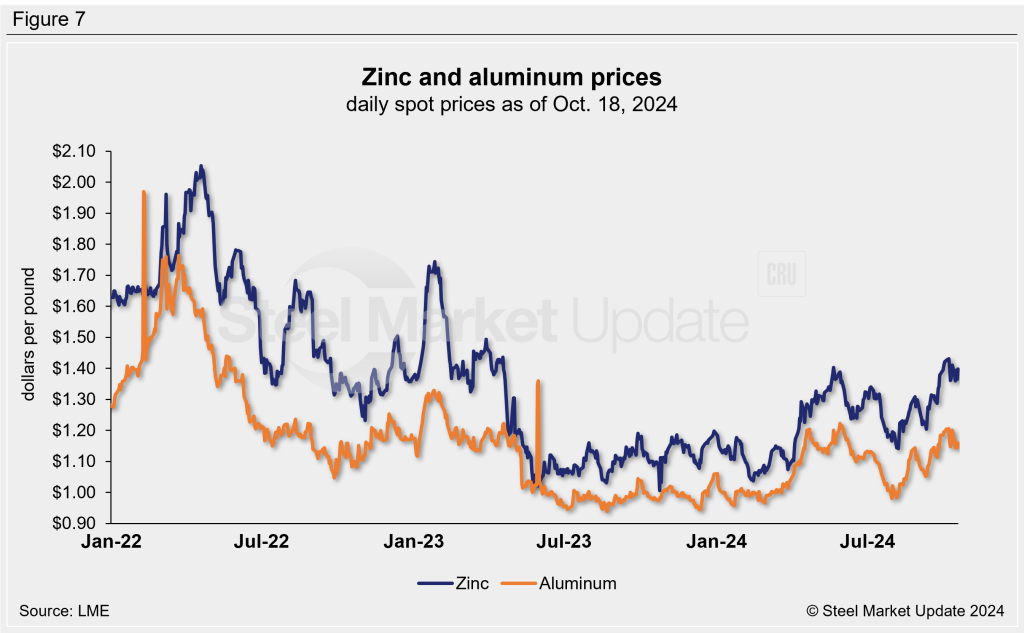Market Data
October 22, 2024
Steelmaking raw material prices trend higher in October
Written by Brett Linton
Editor’s note: Steel Market Update is pleased to share this Premium content with Executive members. For information on how to upgrade to a Premium-level subscription, contact Luis Corona luis.corona@crugroup.com.
Steelmaking raw material prices strengthened for all but one product in October, a change in pace compared to recent months, according to SMU’s latest analysis.
As of Oct. 18, prices for iron ore, coking coal, steel scrap, zinc, and aluminum have all increased month on month (m/m). Pig iron prices have remained flat since July.
Prices for four of the seven raw materials are more expensive than they were three months ago. Some products fluctuated as much as 14% in that time. Table 1 summarizes the percentage changes from one month, three months, and one year ago for each product.

Iron ore
The import price of 62% Fe Chinese iron ore fines has spiked 14% over the past month, rising to a three-month high of $108 per dry metric ton (dmt) on Oct. 9. The latest weekly spot price has slightly eased to $106/dmt delivered North China (Figure 1). Iron ore prices are down 1% compared to levels three months ago and 10% lower than prices recorded this time last year.
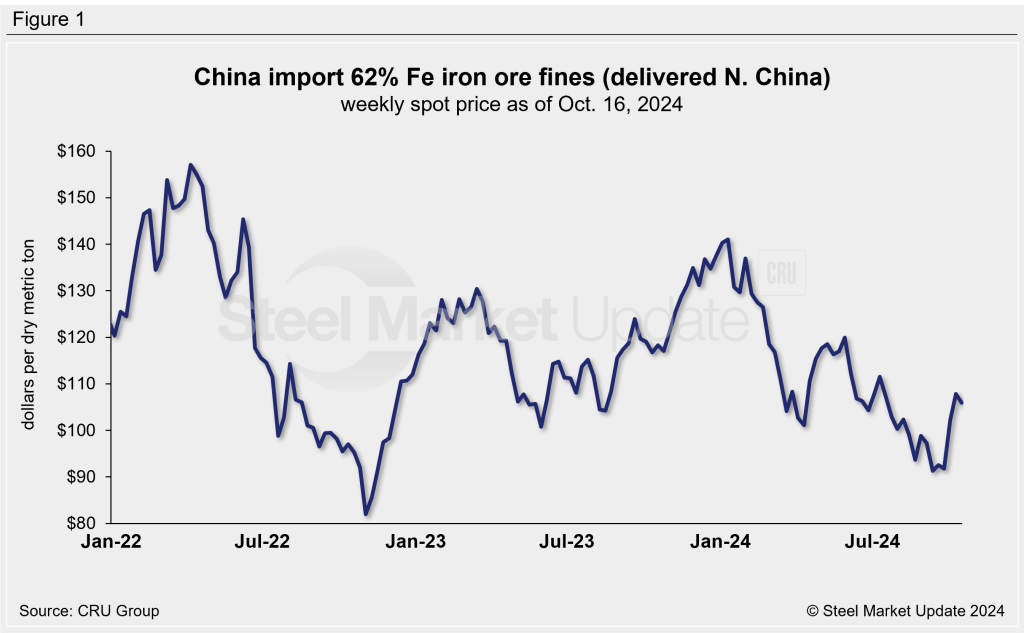
Coking coal
Prices for premium hard coking coal have generally declined across the last year, reaching a three-year low of $182/dmt in mid-September. Prices have ticked 14% higher over the last month, rising to a two-month high of $207/dmt last week (Figure 2). Coking coal prices have declined 14% in the past three months and are 43% less than they were one year prior.
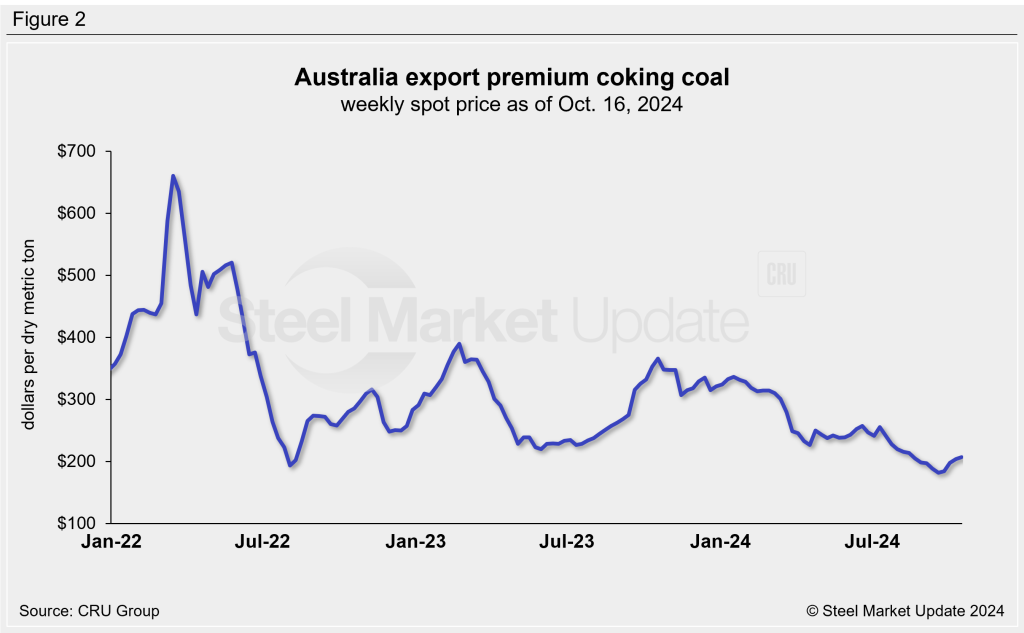
Pig iron
Pig iron prices have stabilized throughout the past year, hovering within a $35/dmt range over the last 14 months. As of October, prices have remained flat at $460/dmt, unchanged since July (Figure 3). Pig iron prices are 10% higher than levels one year ago. Recall that pig iron prices had jumped more than 60% in April 2022 following the invasion of Ukraine by Russia, reaching a historic high of $975/dmt.
Note that most of the pig iron imported to the US had come from Russia, Ukraine, and Brazil. This report uses Brazilian prices, averaging north and south port prices.
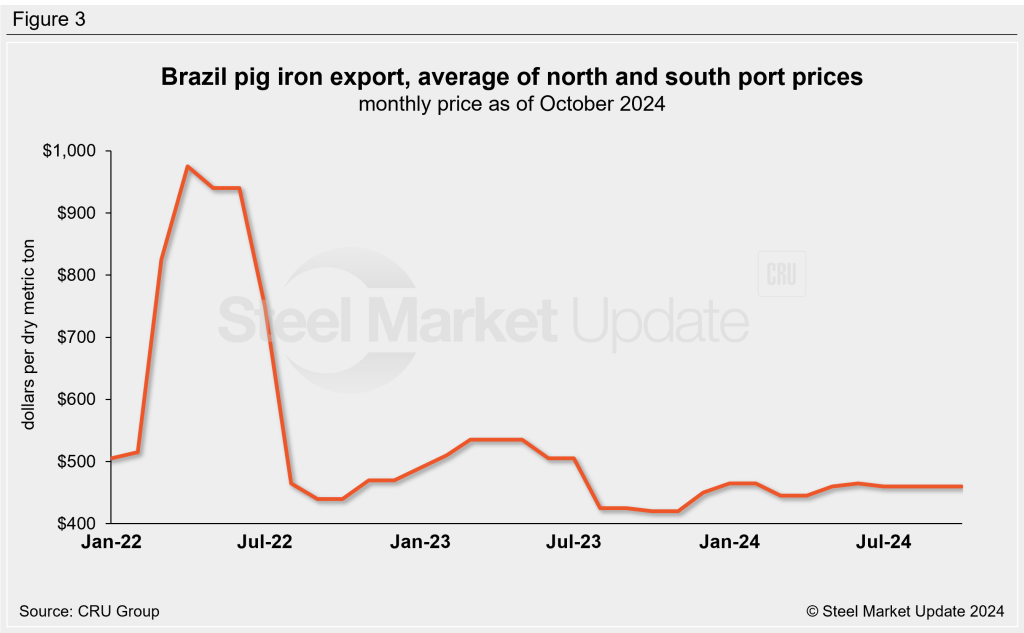
Scrap
Following their peak last December, steel scrap prices trended lower across the first seven months of this year, but have shown signs of recovery in recent months. SMU’s busheling and shredded scrap indices marginally increased from September to October; busheling scrap prices rose 3% m/m to $405 per gross ton (gt), shredded scrap ticked up 4% to $390/gt (Figure 4). Scrap tags are up 3-8% from prices recorded three months ago and are 1-5% higher than this time last year.
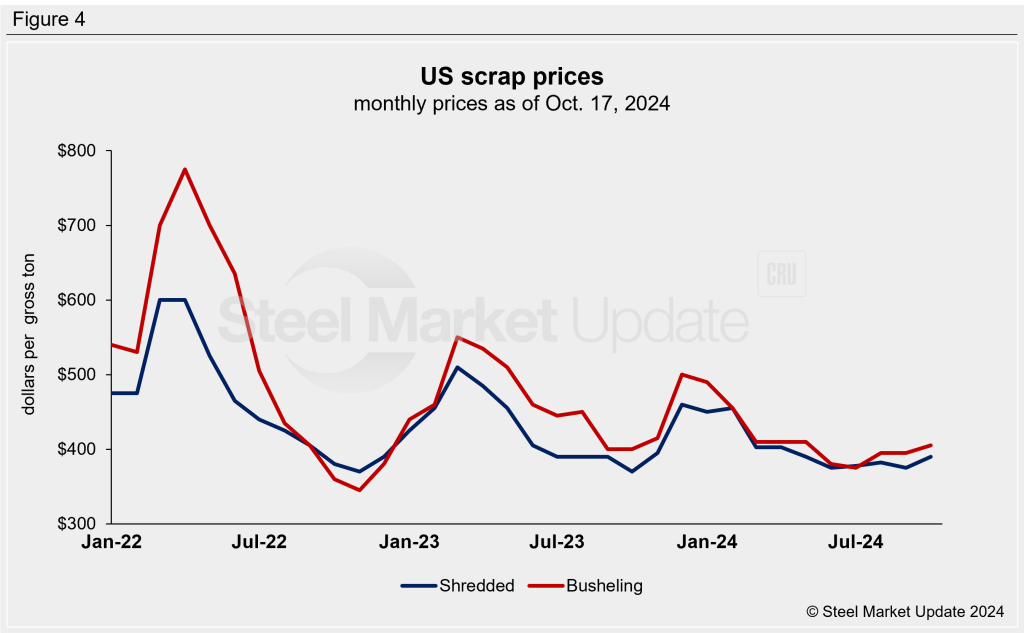
Changes in the relationship between scrap and iron ore prices offer insights into the competitiveness of integrated (blast furnace) mills, whose primary feedstock is iron ore, compared with mini-mills (electric-arc furnace), whose primary feedstock is scrap. Figure 5 compares the prices of mill raw materials over the past few years.
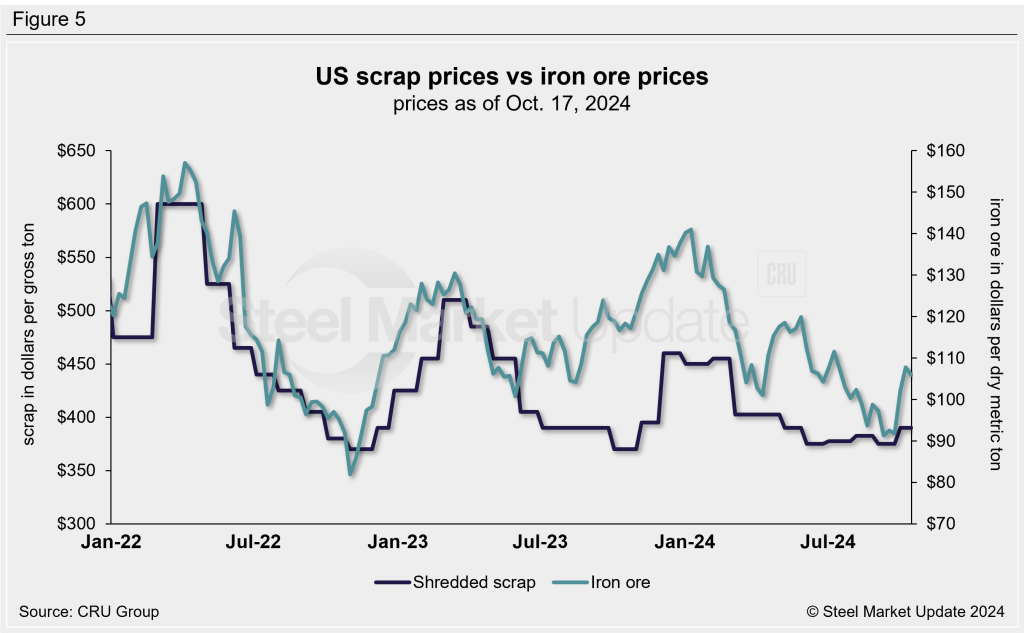
To compare these two feedstock materials, SMU divides the shredded scrap price by the iron ore price to calculate a ratio. A high ratio favors the integrated producers and a lower ratio favors the mini-mill producers.
As shown in Figure 6, integrated mills had mostly held the cost advantage between late 2021 through mid-2023. The advantage then briefly shifted to mini-mill producers in the second half of last year. After bobbing up and down this year, the ratio has favored integrated mills for the past three months.
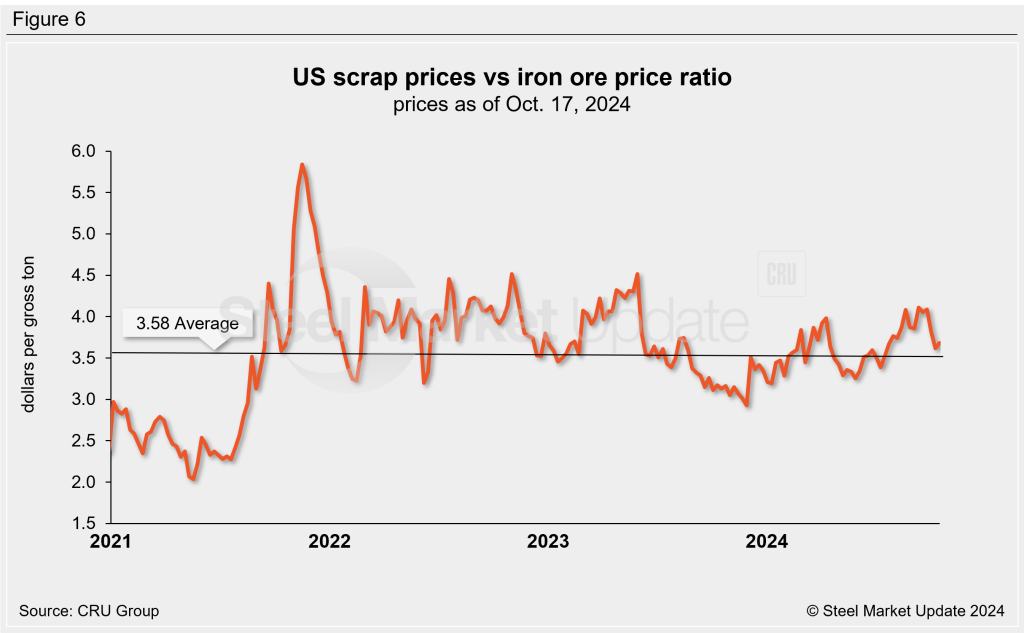
Zinc and aluminum
Zinc is used in galvanized and other coated steel products. Prior to April, zinc spot prices had been relatively stable for almost a year. Prices surged in April and May, prompting some mills to increase their galvanized coating extras, then trended lower through early August. Since then prices have begun to rally again, climbing to a year-and-a-half high of $1.43 per pound (lb) earlier this month. The latest LME cash price for zinc is up 7% m/m to $1.40/lb as of Oct. 18. Zinc prices are 13% higher than levels three months prior and up 28% compared to October 2023 (Figure 7).
Aluminum prices, which factor into the price of Galvalume, have trended similarly to zinc prices. Aluminum prices climbed to a one-year high of $1.22/lb back in May, receded through August, then climbed again. The latest LME cash price has risen 1% over the last 30 days to $1.16/lb. Aluminum prices are 9% higher than tags three months prior and 18% greater than levels seen this time last year. Note that aluminum spot prices sometimes have large swings and return to typical levels within a few days, as seen in Figure 7.
